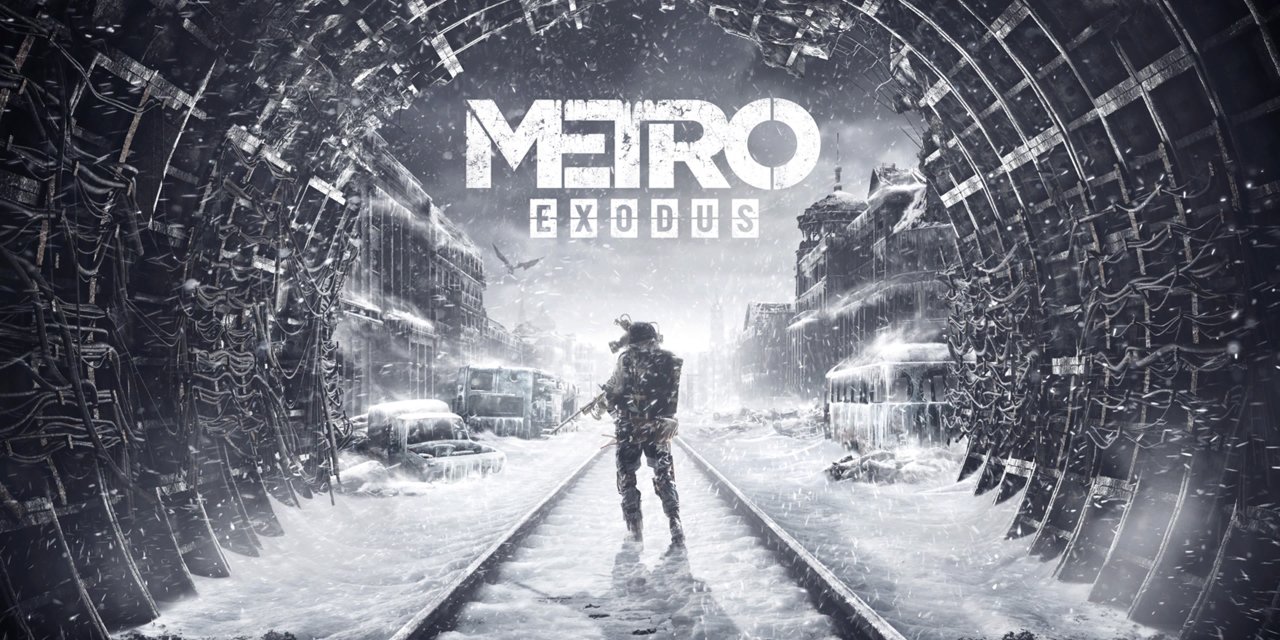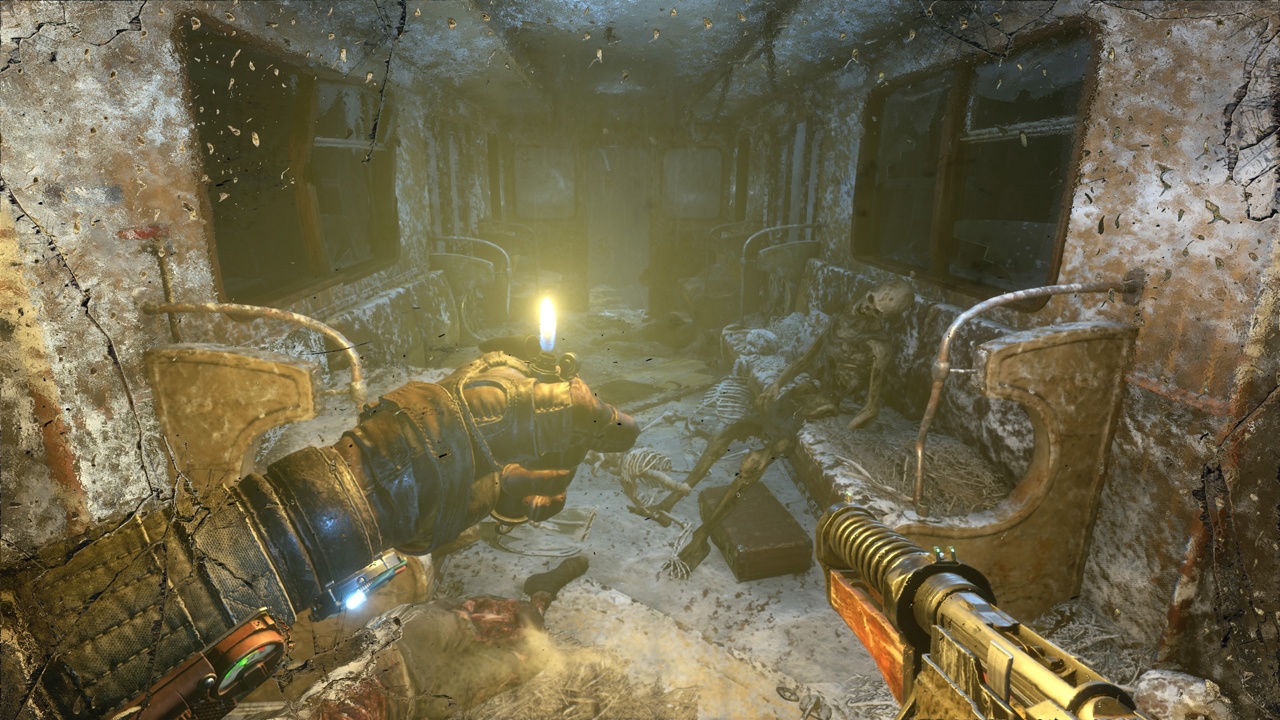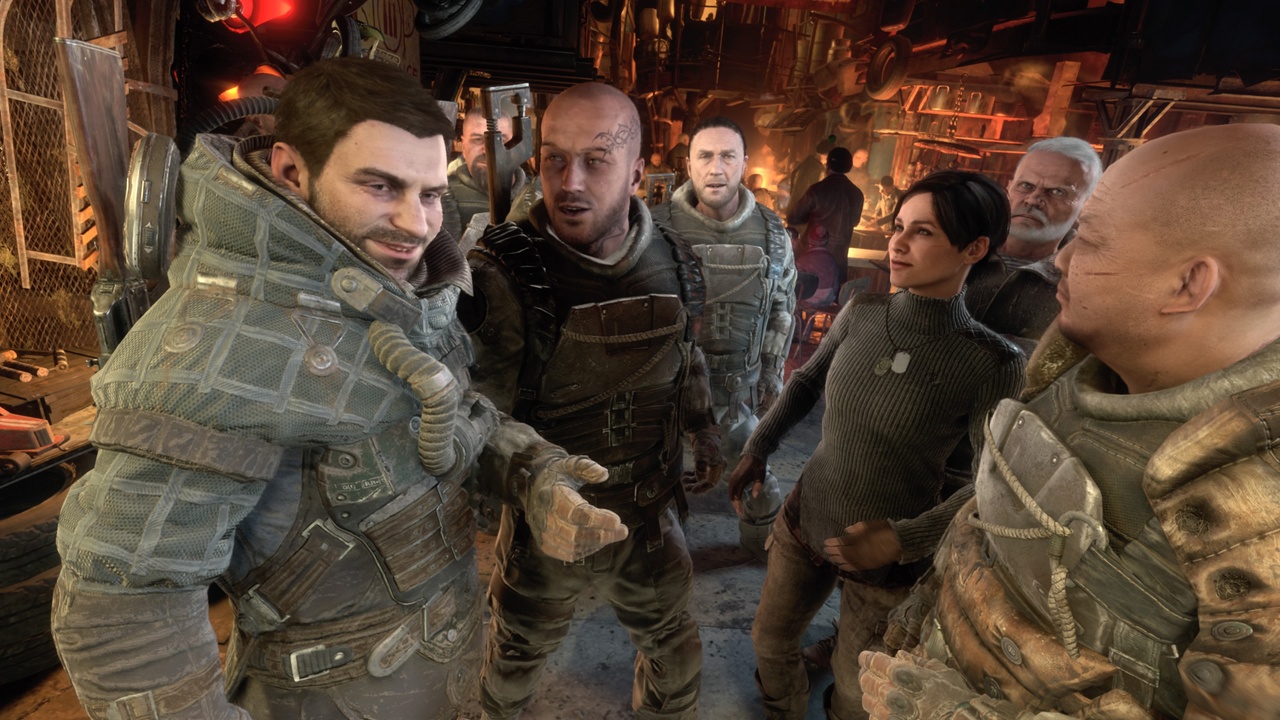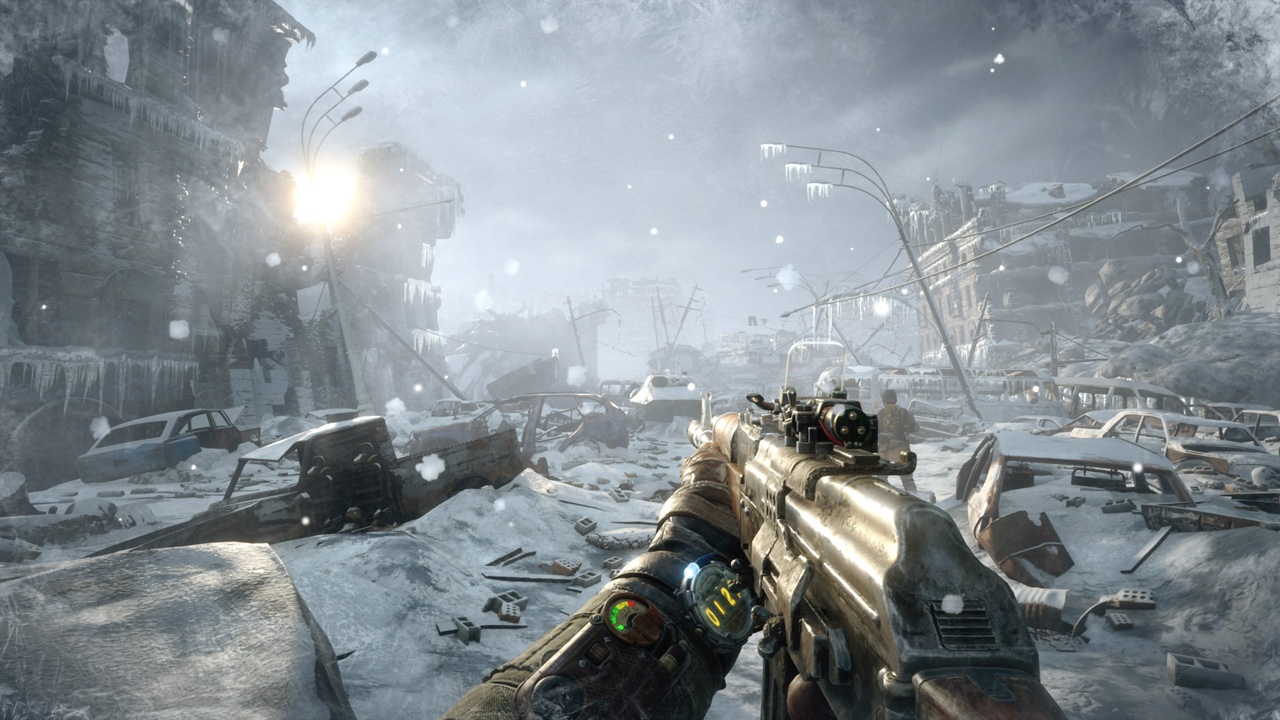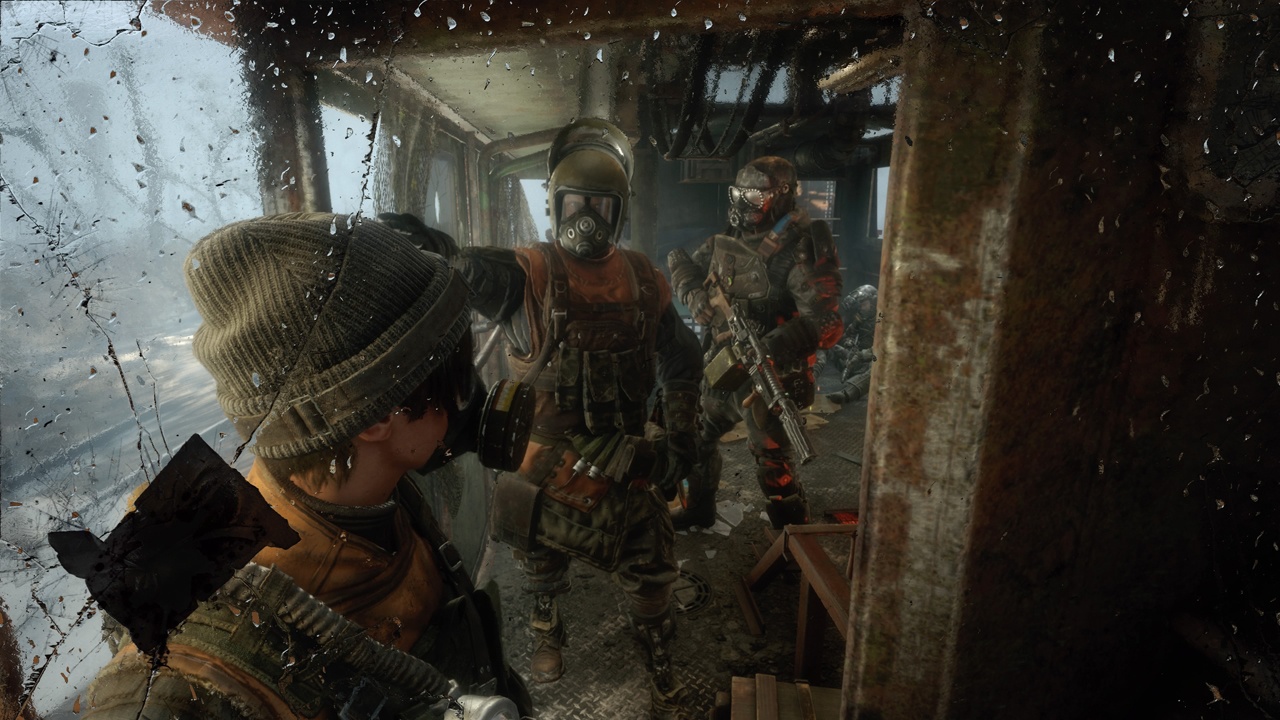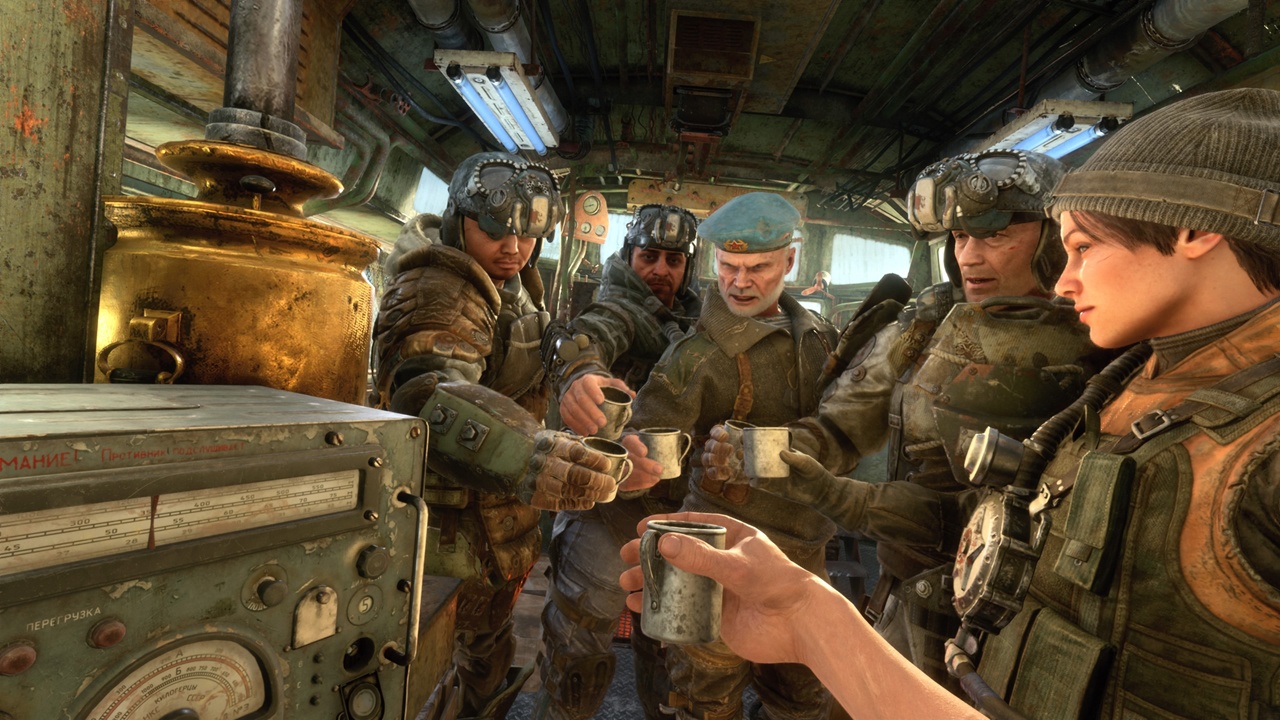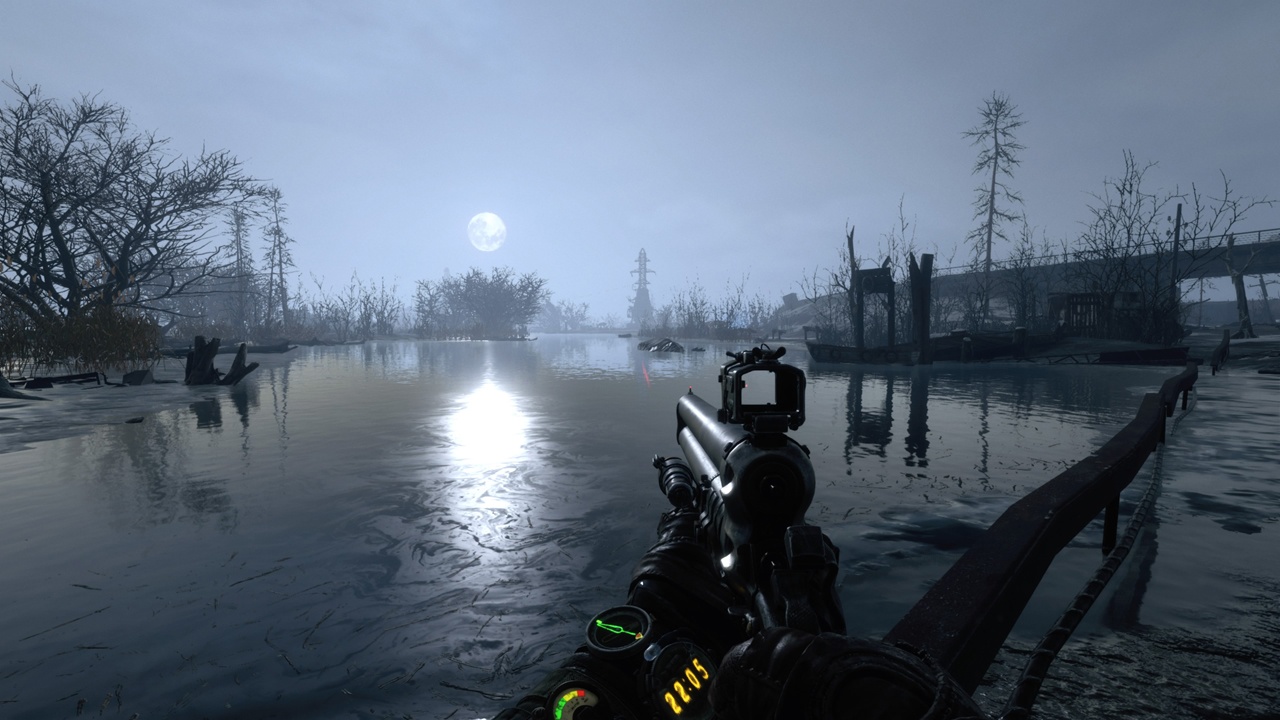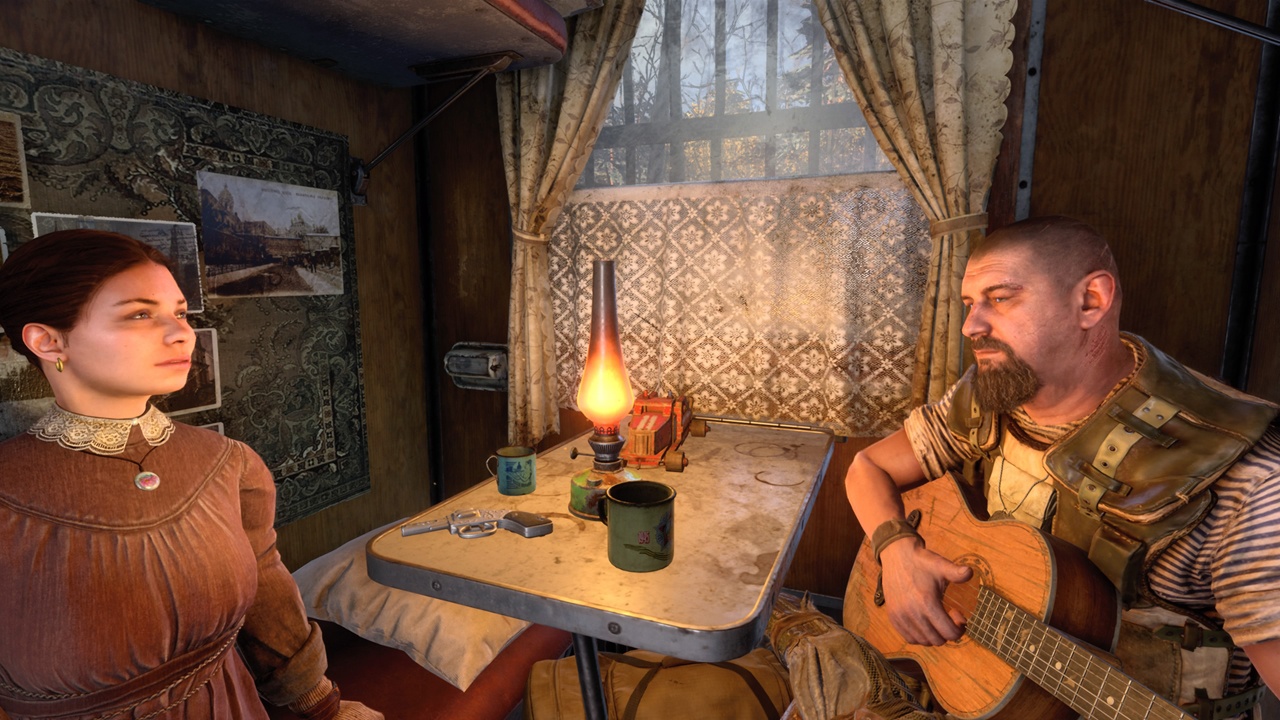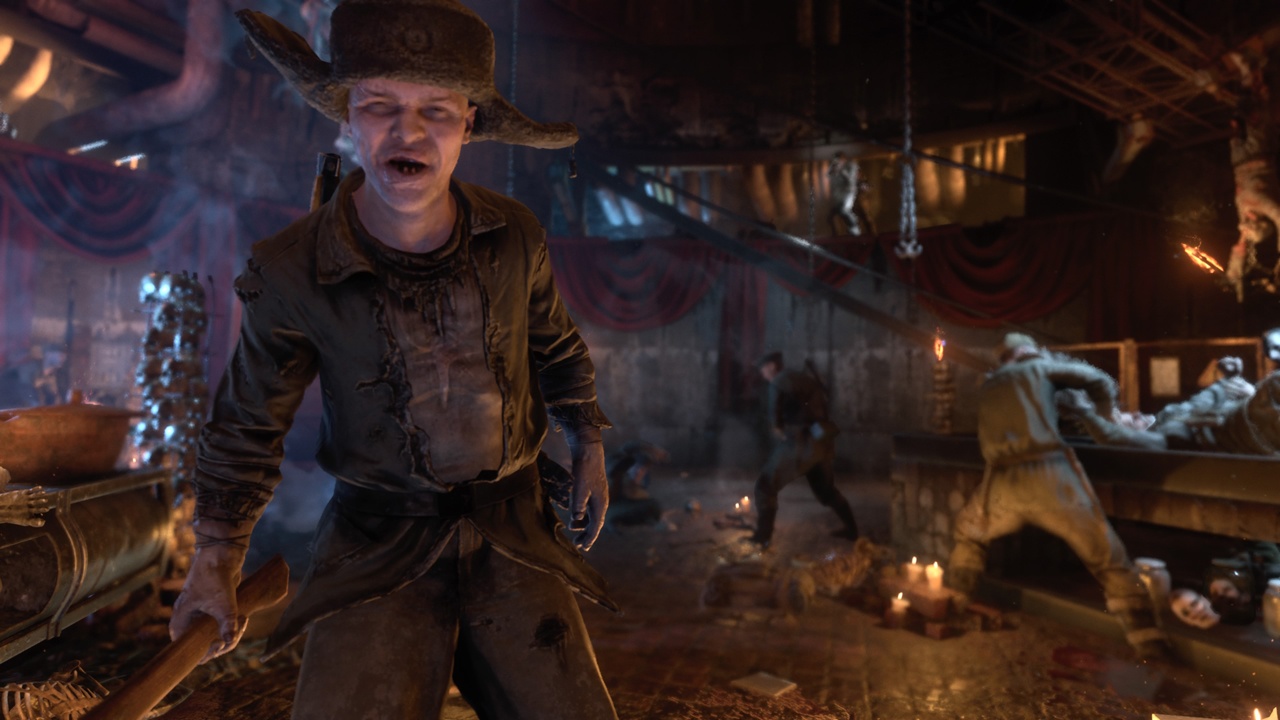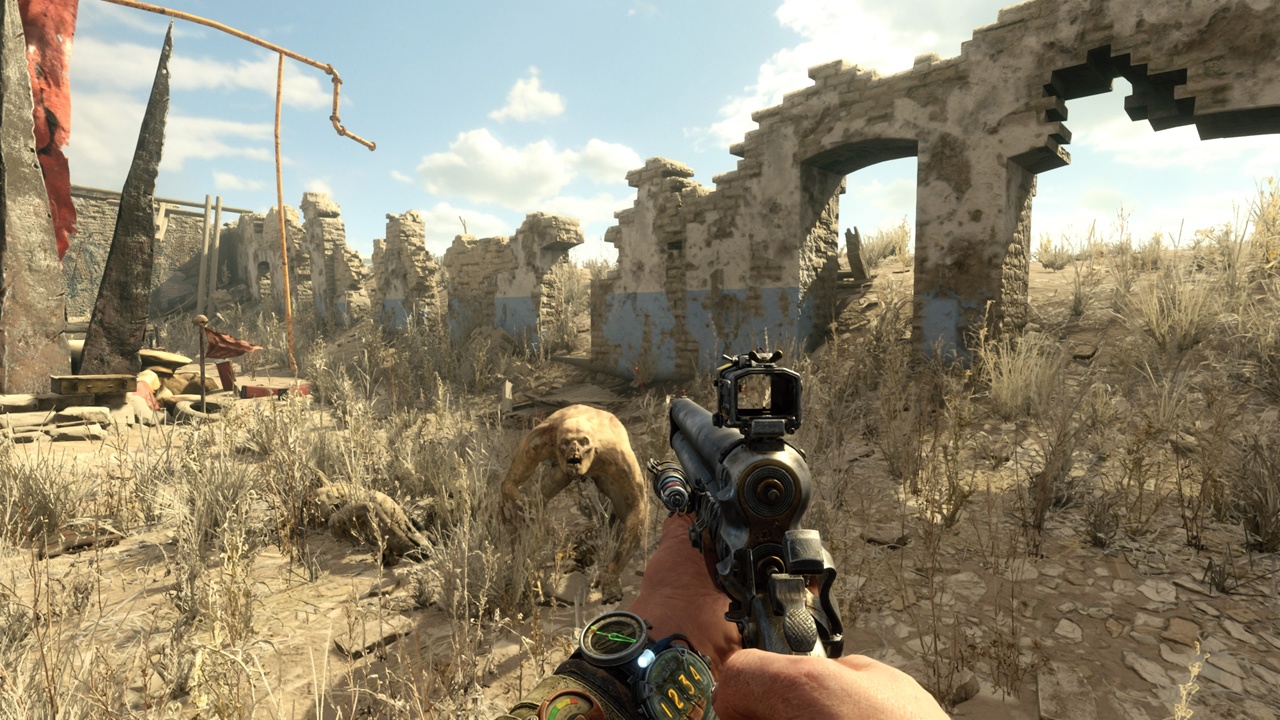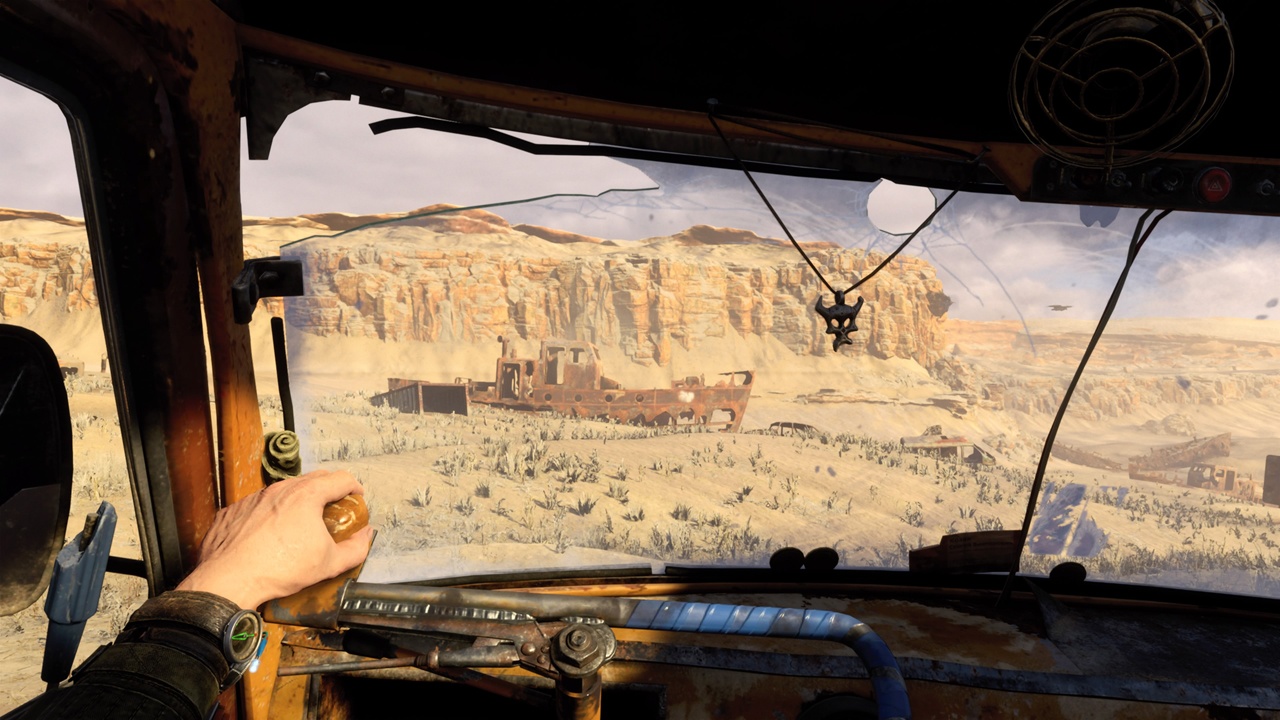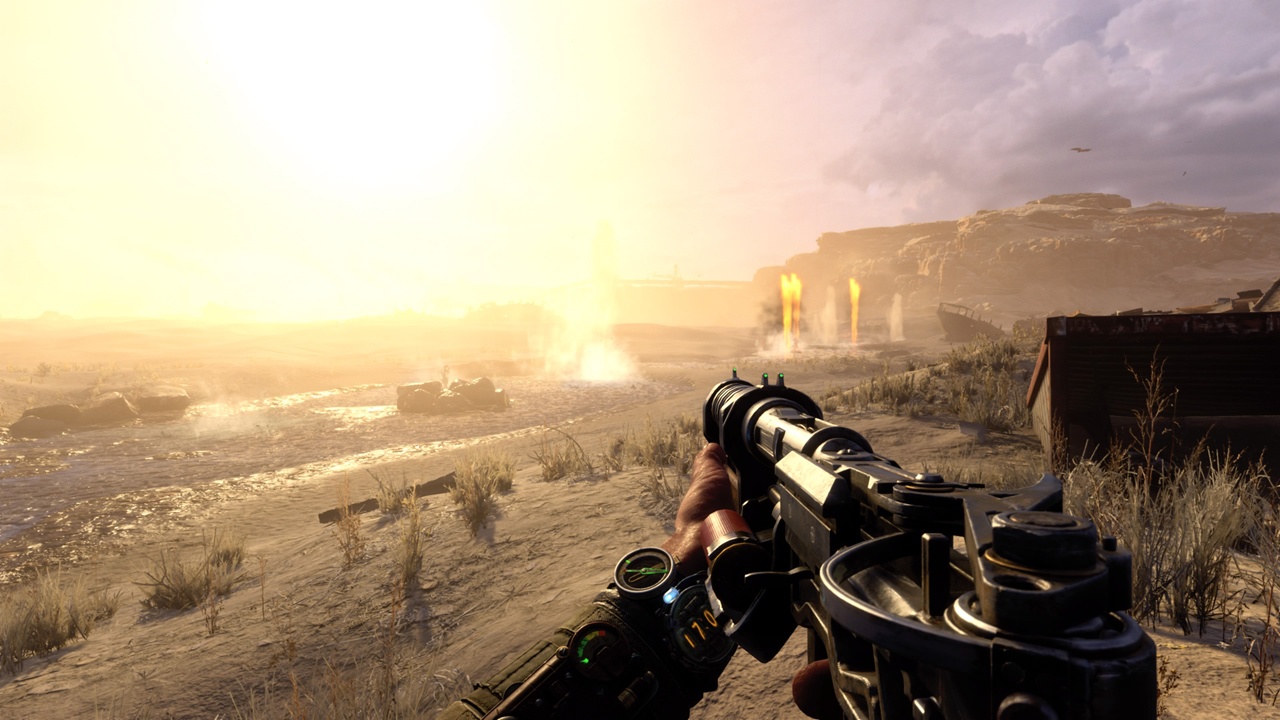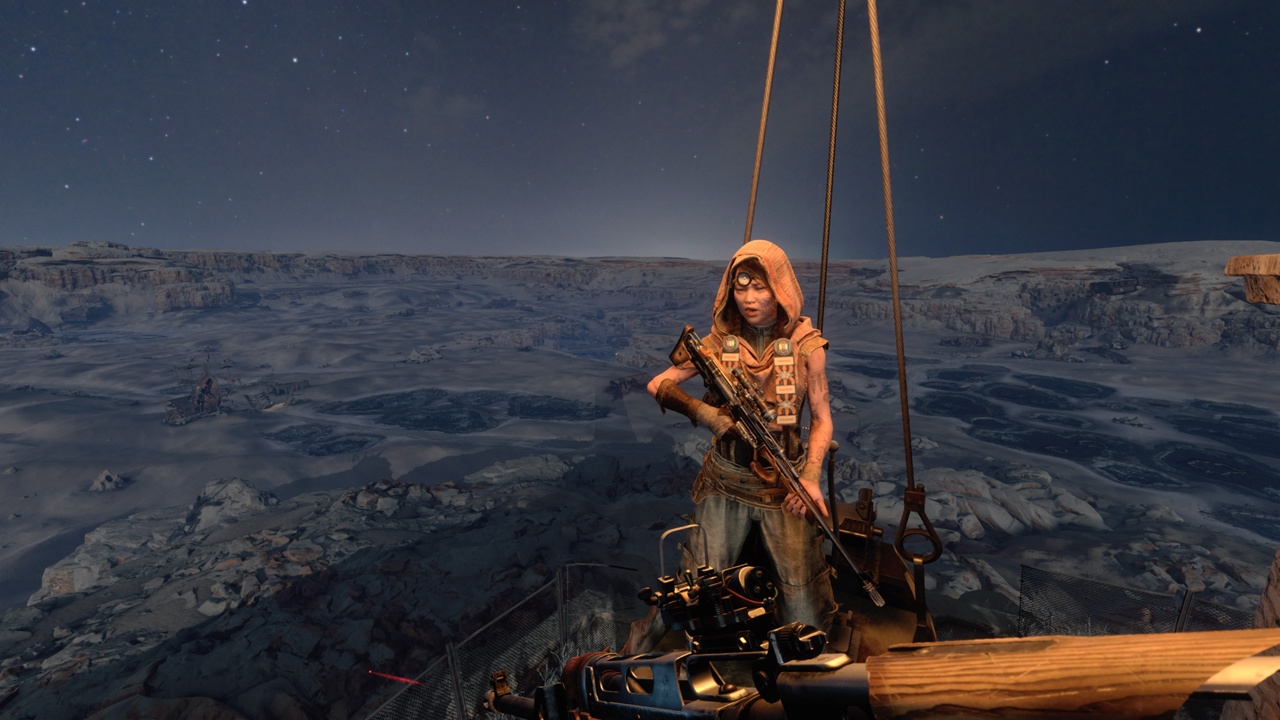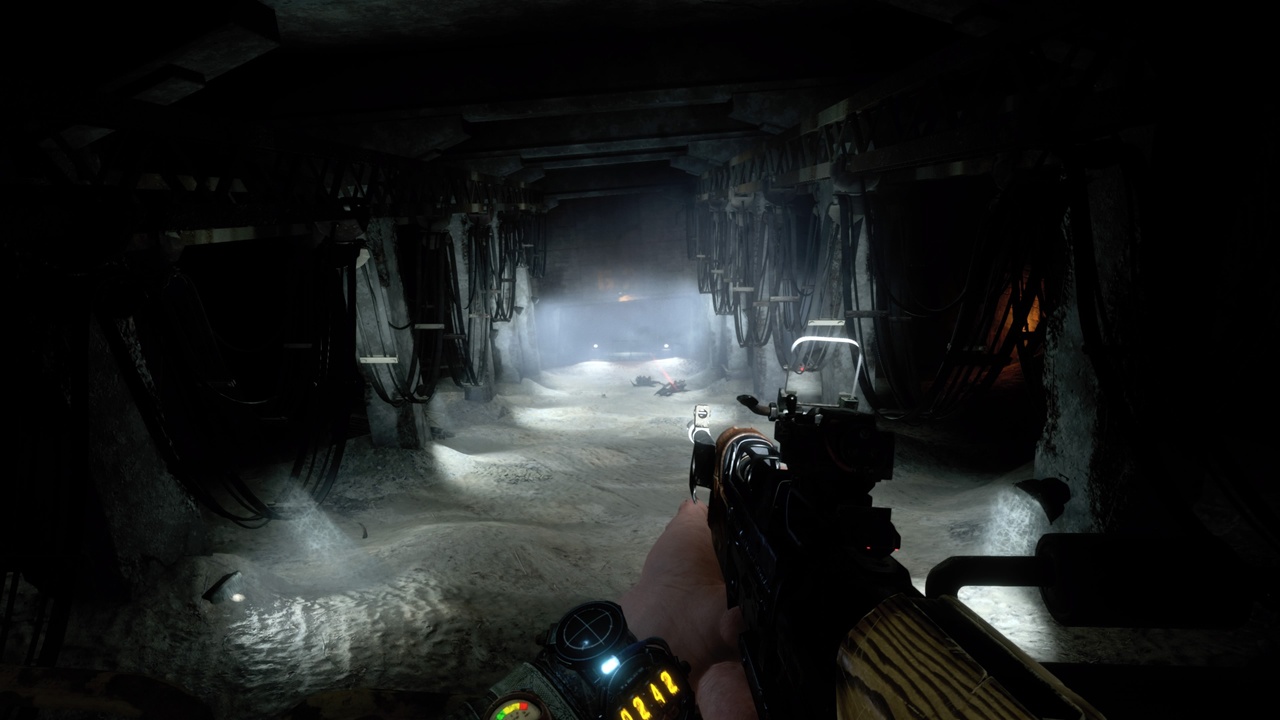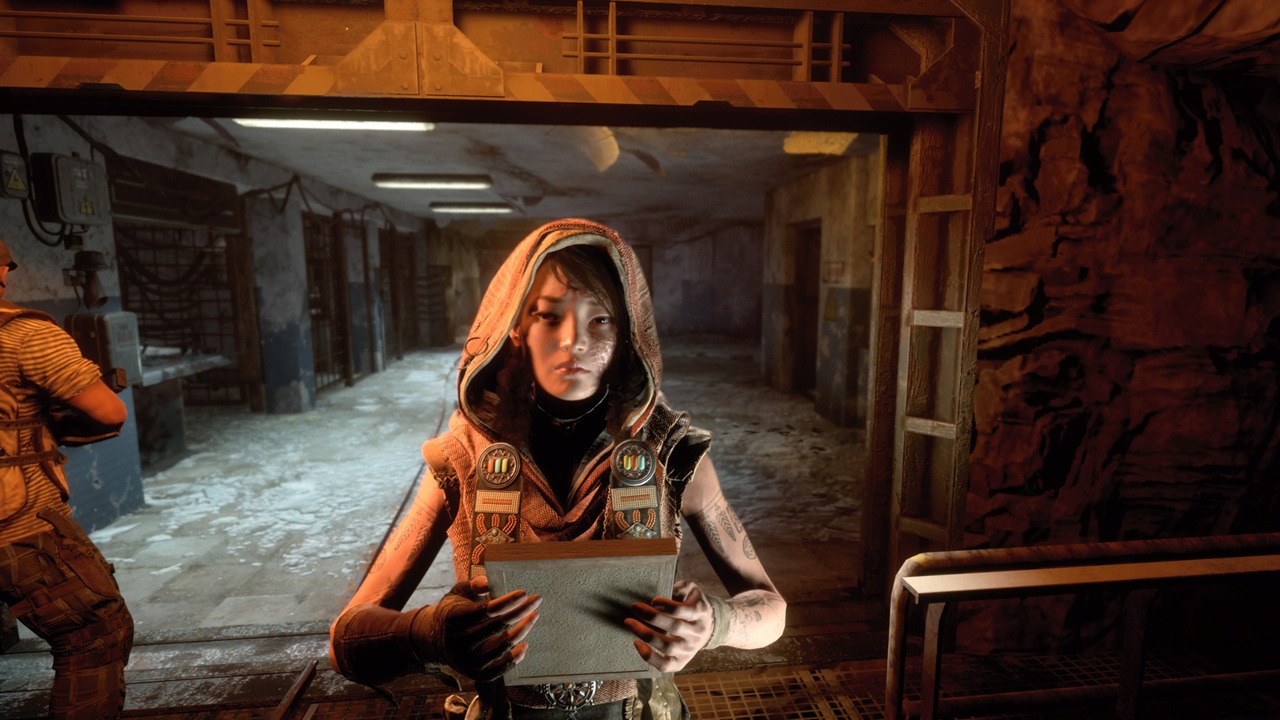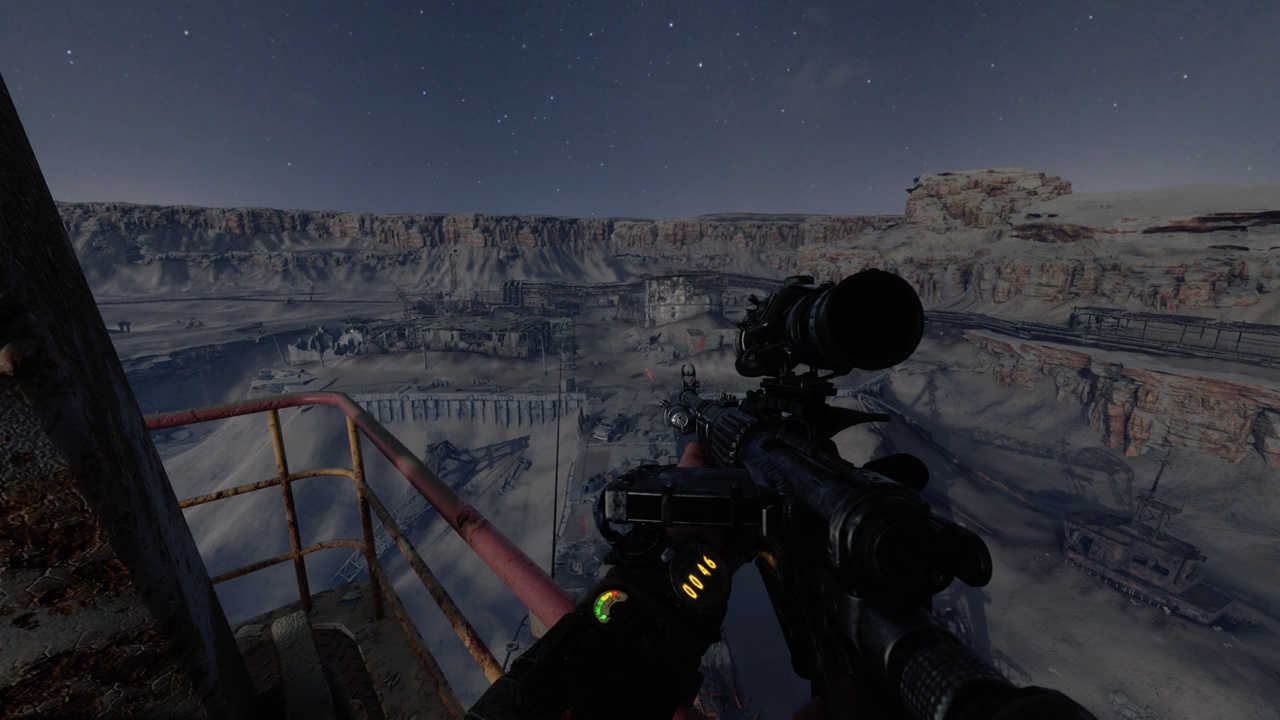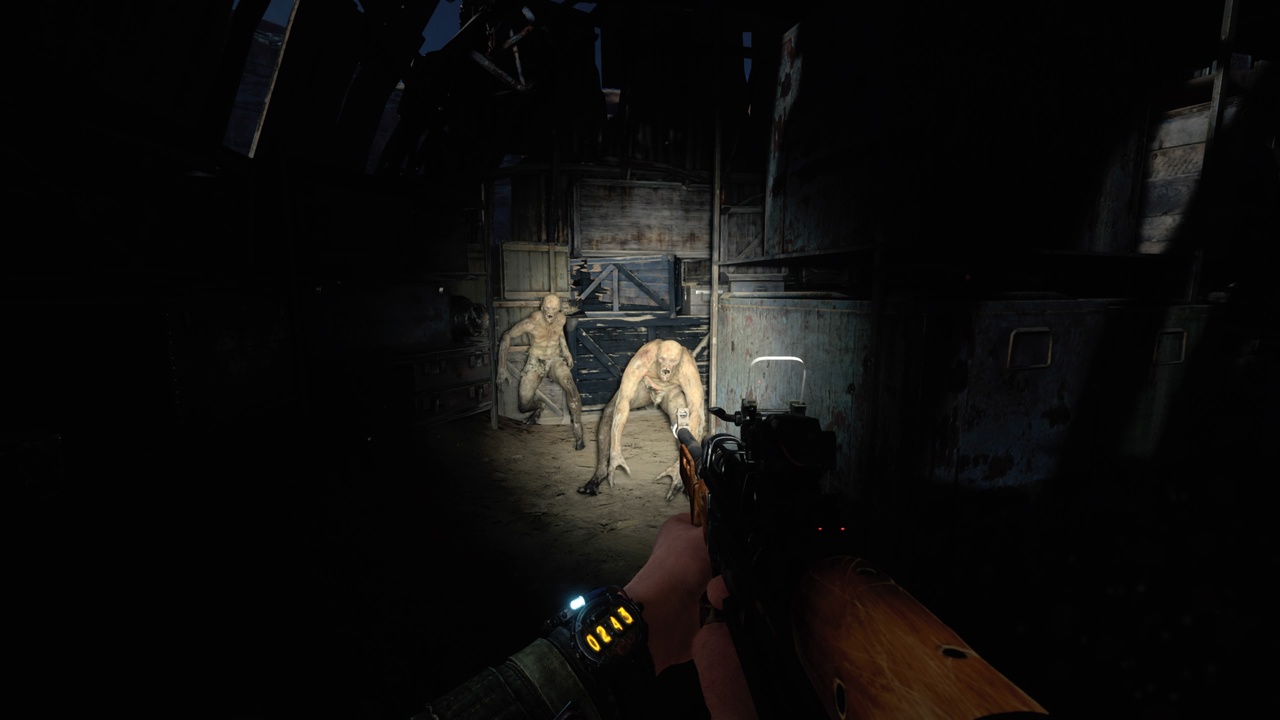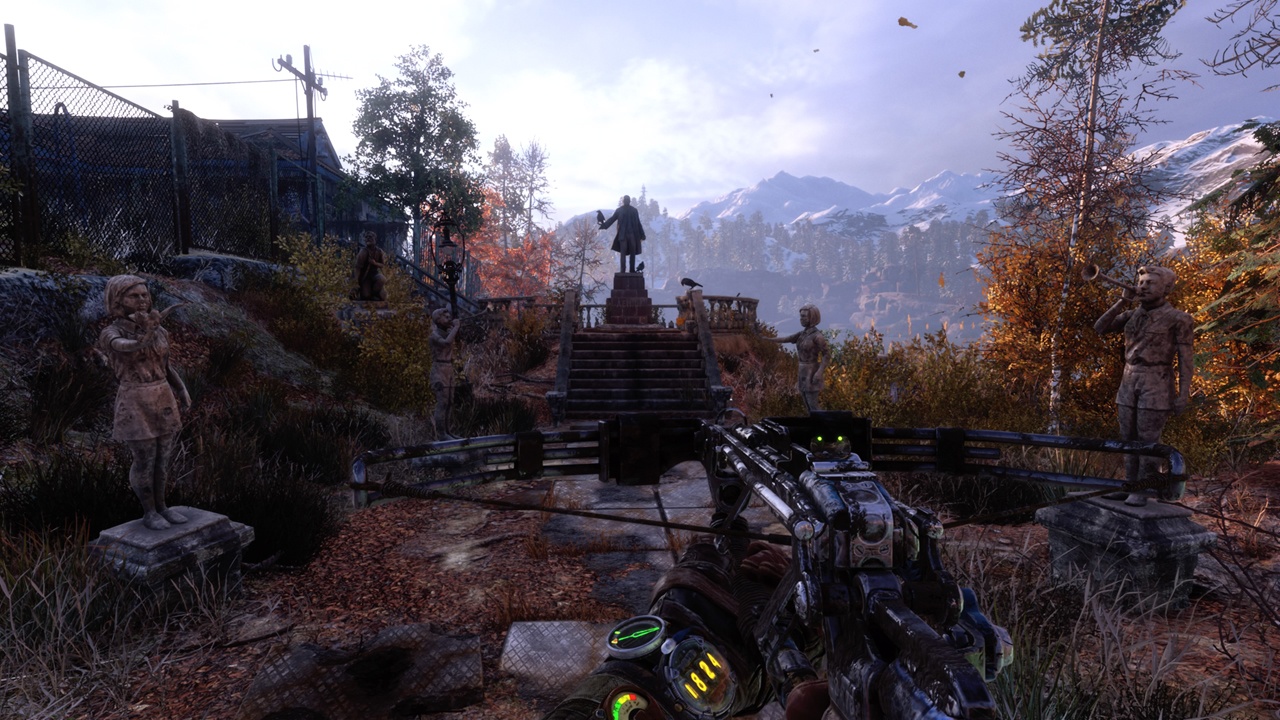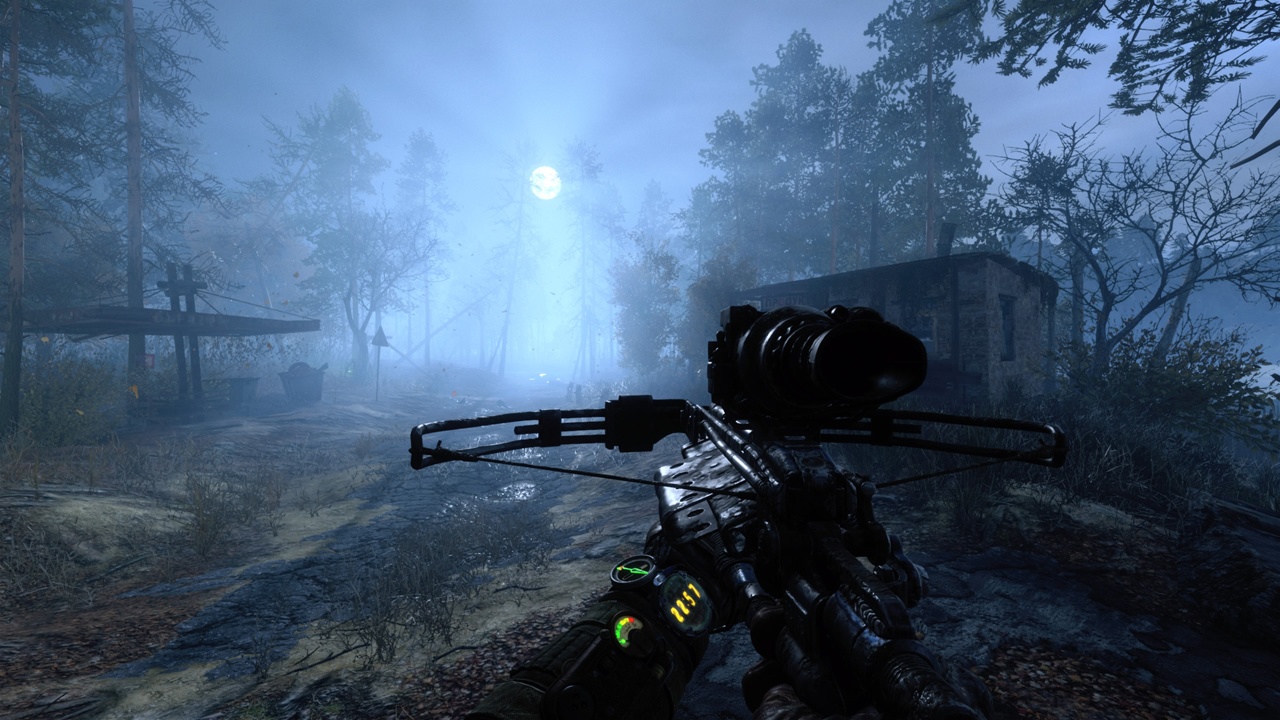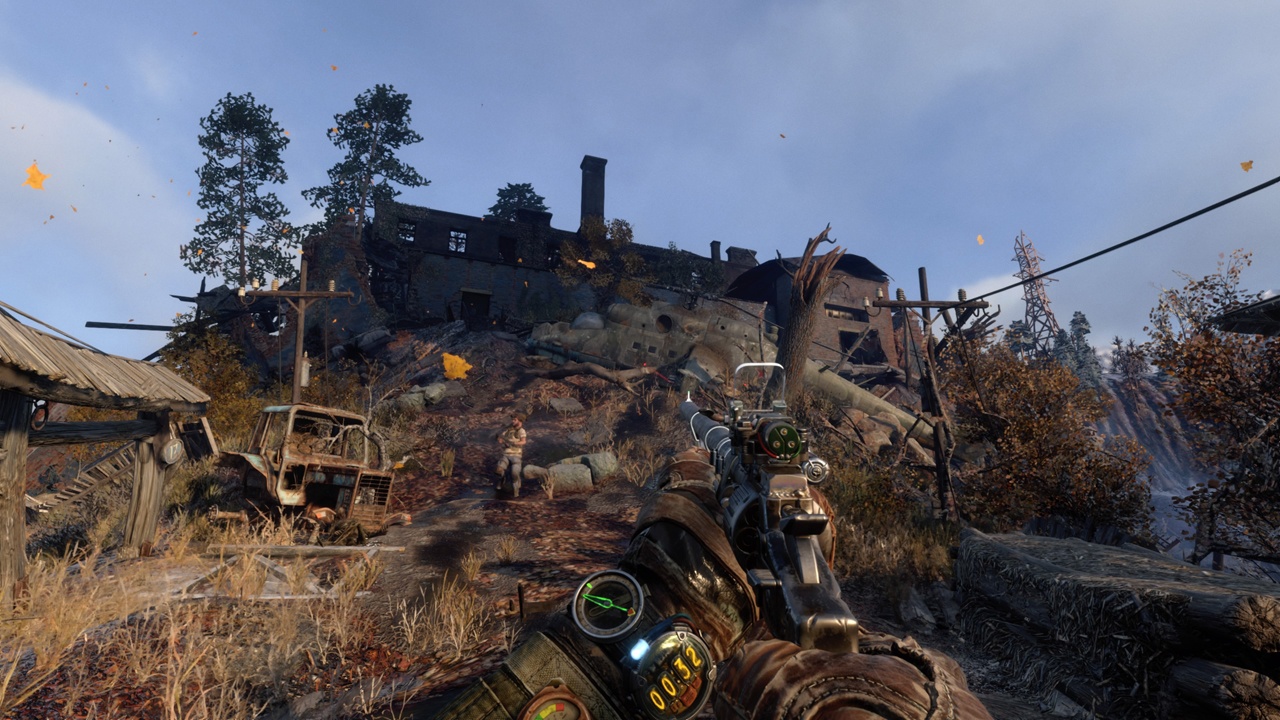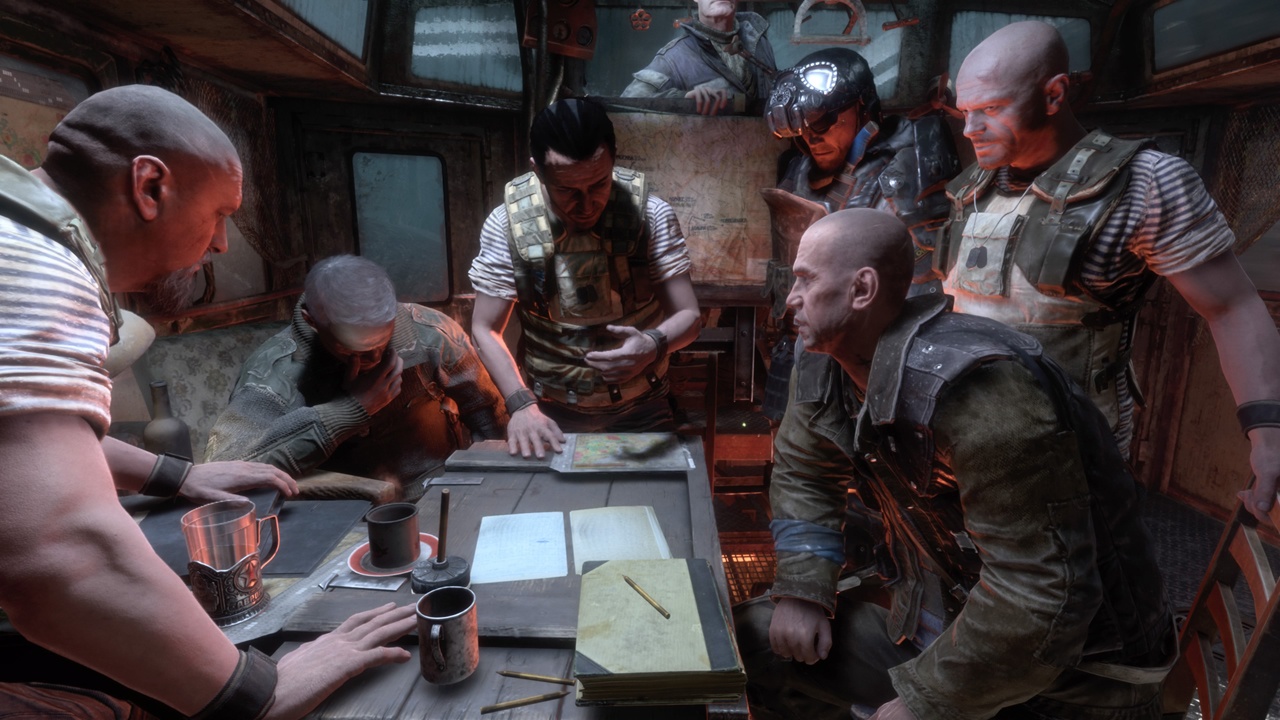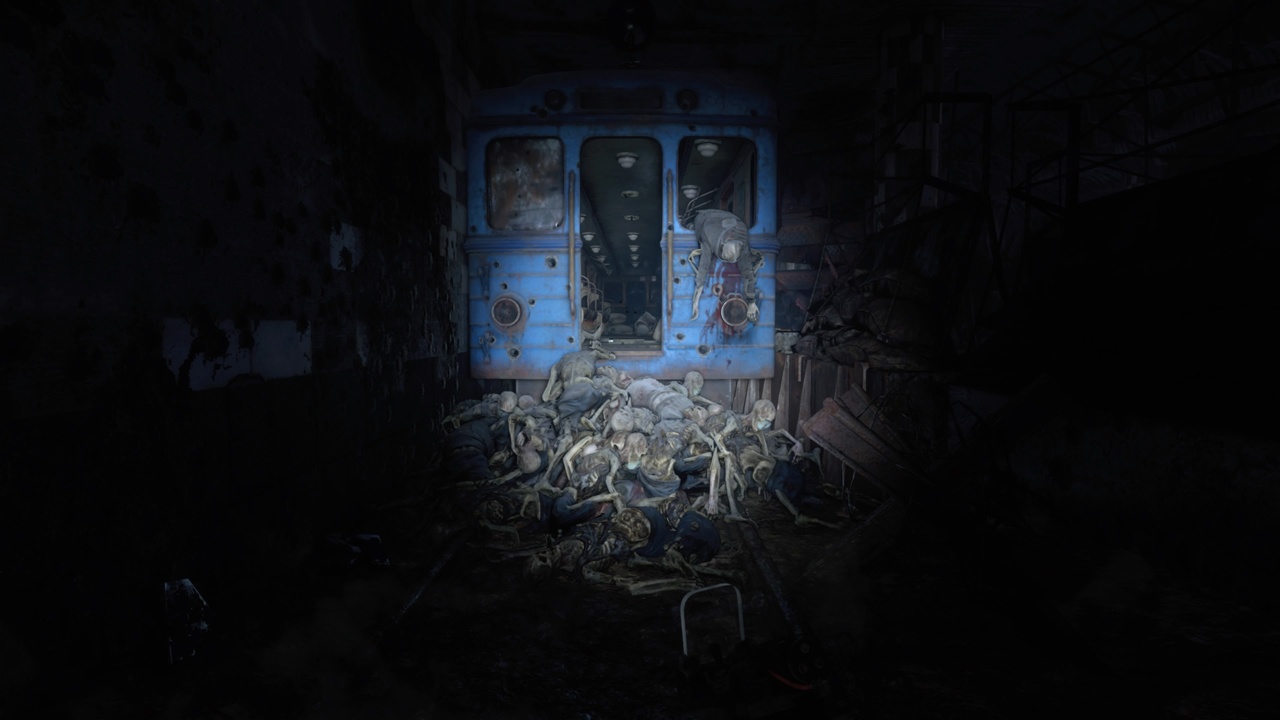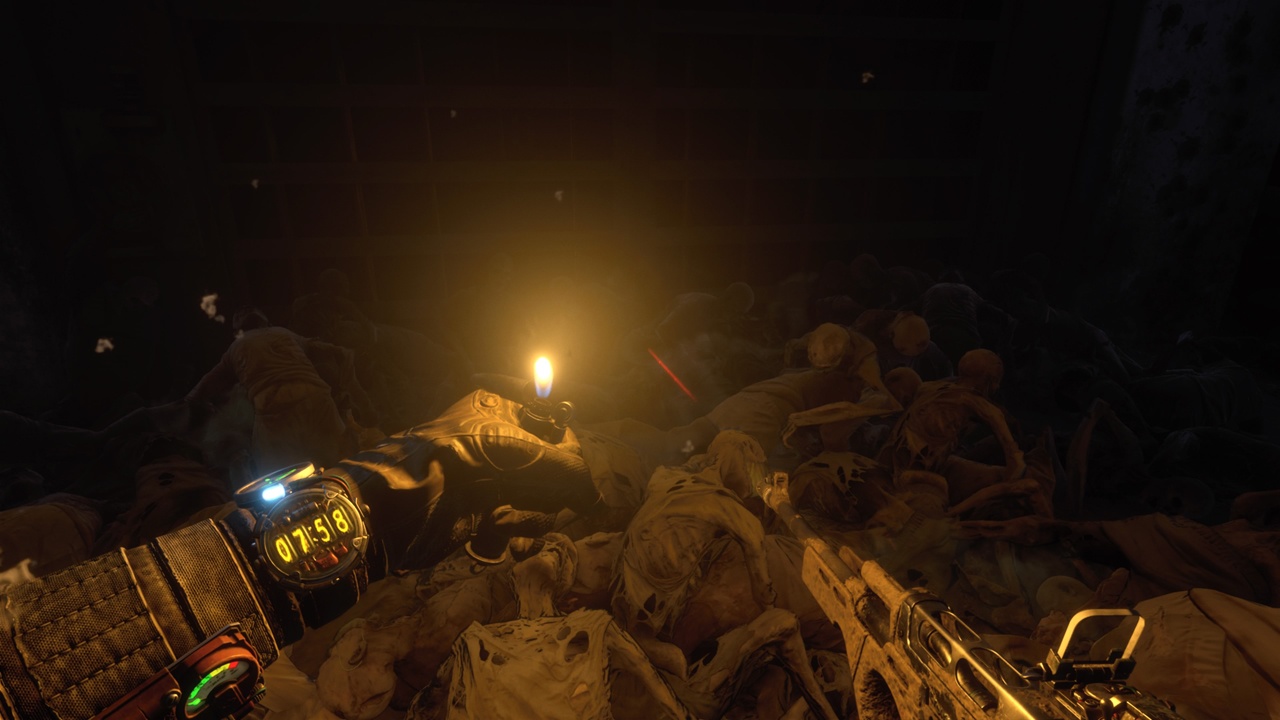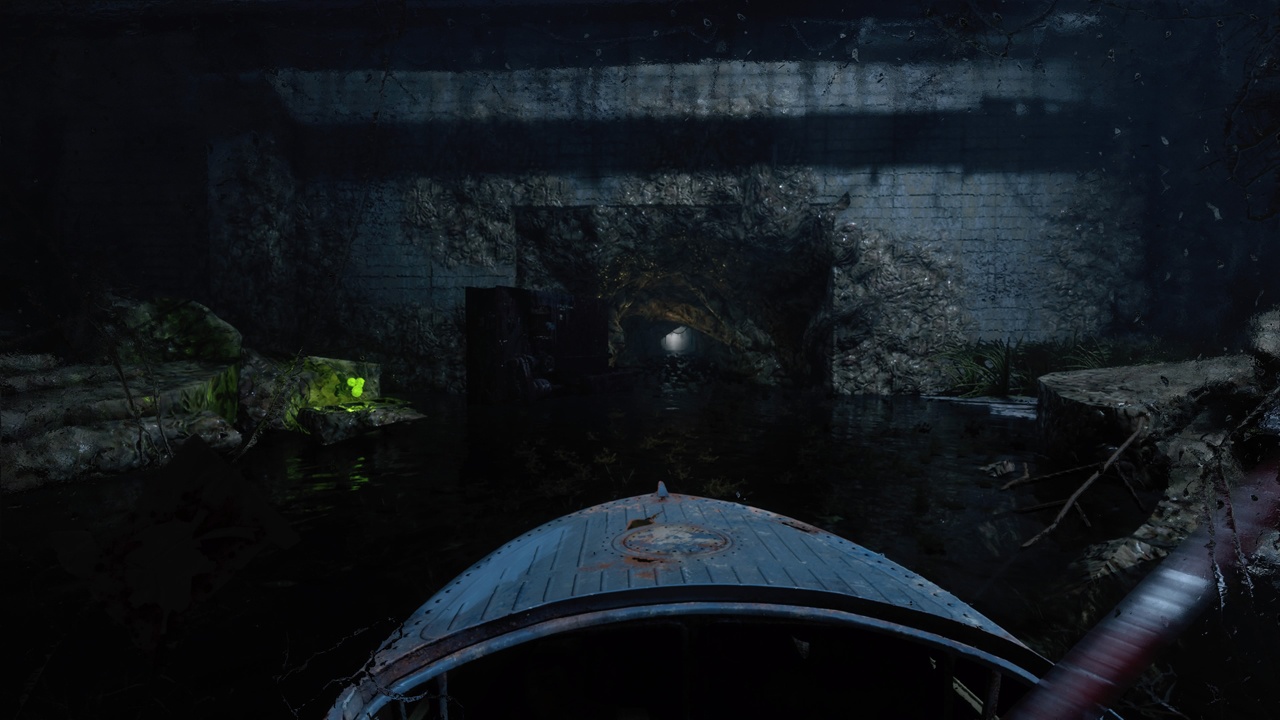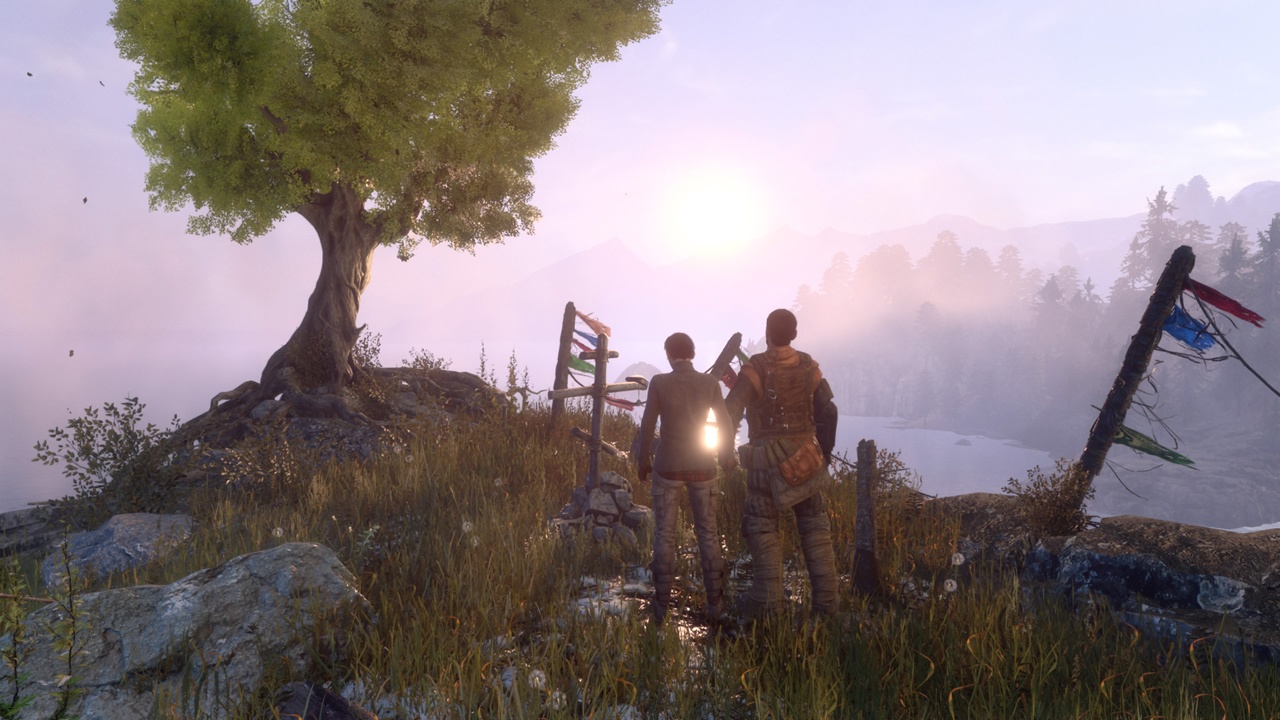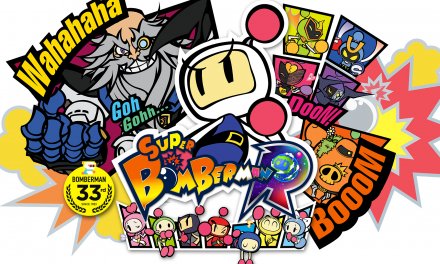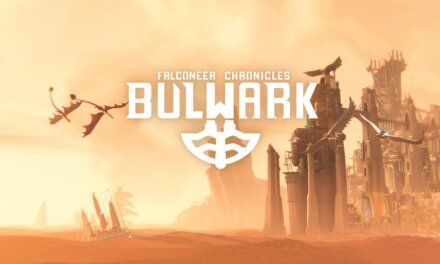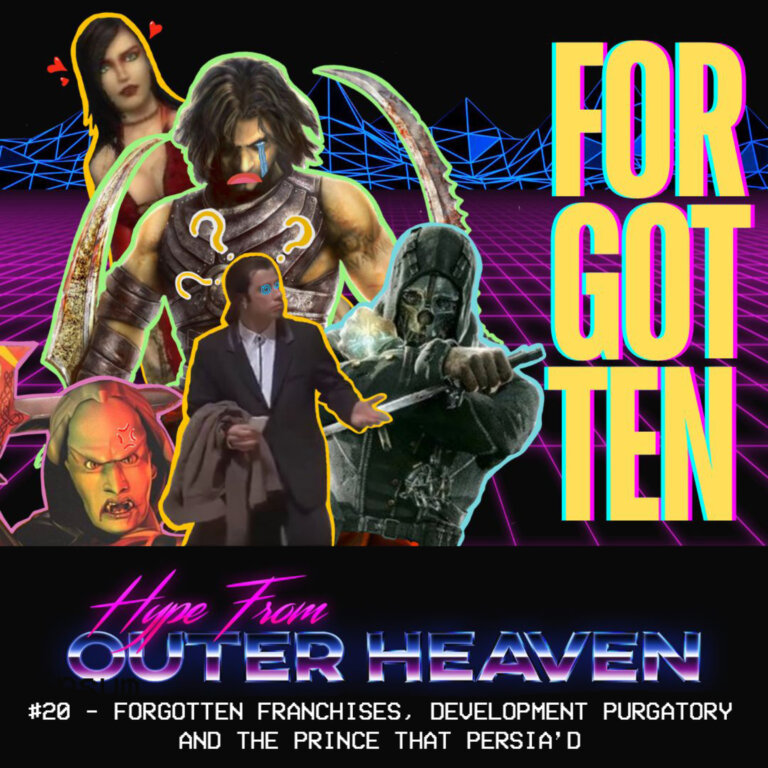“To live without hope is to cease to live.” – Fyodor Dostoevsky
Having been in development since 2014 and acting as the sequel to Metro 2033 and Metro: Last Light; Metro Exodus is finally here, ditching the claustrophobic confines of Moscow’s metro system for the wide, open expanse of post-apocalyptic Russia in 2036. Changing up the linear gameplay design found in its predecessors, Metro Exodus has opted for a more open-ended level design, offering large, open areas that will change throughout the story, giving the series a much larger sense of scale than ever before (but not necessarily for the better). As usual I’ll be covering the PlayStation 4 version of the game, covering the positives and deconstructing the negatives, ultimately commenting on whether it’s worth the £54.99 asking price (EU PSN Store).
Part survival horror, part shooter; The Metro franchise has always struggled with somewhat of an identity crisis, but this is paradoxically the same thing that has made the series so unique. Metro 2033 (2010) and Metro: Last Light (2014) are both known for their claustrophobic, haunting environments that portray the remnants of humanity trying to survive in a dead world, clinging to life within the confines of the Metro tunnels beneath post-apocalyptic Moscow. In terms of horror as an interactive medium, it’s always portrayed more effectively when the environment is deliberately designed to enhance the atmosphere, something that the Metro series has done extremely well in the past with its claustrophobic level design and haunting soundscape. A solid example of this would be the level ‘Ghosts’ from Metro 2033, which follows the series’ semi-silent protagonist: Artyom as he follows a wandering mystic called Khan through a dead metro tunnel that is stuck in a constant cycle of torment. Raw gameplay is very light in ‘Ghosts’, but it’s easily one of the best levels in the whole game, consisting mainly of following Khan through the dilapidated tunnels as he gives an insight into the battle that took place there, building the scene as you discover that the tunnel is actually a purgatory-esque tomb for the tortured souls that fell within, all the while enveloped in an atmosphere that is unmatched by the best horror games out there. The 2014 remasters for both games (titled Metro Redux) personified the ‘identity crisis’ aspect of the series, featuring two distinct difficulty modes: Spartan and Survival that changed the game significantly when played on either mode. Spartan mode offers plentiful amounts of ammo and more forgiving enemy AI, allowing you to play both games like a typical, gung-ho, first-person shooter; Survival mode on the other hand hold’s down a number of survival-horror mechanics (similar to the original Metro 2033) such as a general lack of resources, shorter duration on filters, more intelligent enemy AI etc. which is where both ‘Redux’ titles truly shine as solid examples of survival horror done right.
Metro Exodus takes the series in a new direction altogether, ditching the claustrophobia and political in-fighting of the Metro tunnels in favour of the discovery of what lies beyond the crumbling ruins of Moscow. The game places you once again in the shoes of series’ protagonist: Artyom, taking place some time after the battle for D6 at the end of Metro: Last Light (Metro Exodus follows the ‘Redemption’ ending) where Artyom has grown distant from the Spartan order and the Metro as a whole, clinging to the idea that life exists (and is flourishing) outside the Metro. After the intro missions and butting heads with Hanza, Artyom soon discovers that the whole of the Metro has been living under the guise of a lie for more than twenty years. Many of the Metro’s top brass (Colonel Miller included) believe the world is still in a state of total war, and as such, a giant jamming device was installed to suppress communication with the outside world, in an attempt to make the occupying forces believe that Moscow is truly dead, and to avoid the possibility of any follow-up retaliatory strikes on the City. Soon after destroying the jammer, Artyom, Miller, Anna and the rest of the Spartan order have no choice but to flee from Hanza as they are now branded as traitors. The group commandeers a locomotive (that they later dub the Aurora) and set out on a journey across post-apocalyptic Russia in an attempt to find a place that they can call home, free from radiation, and the mutated horrors that accompany it.
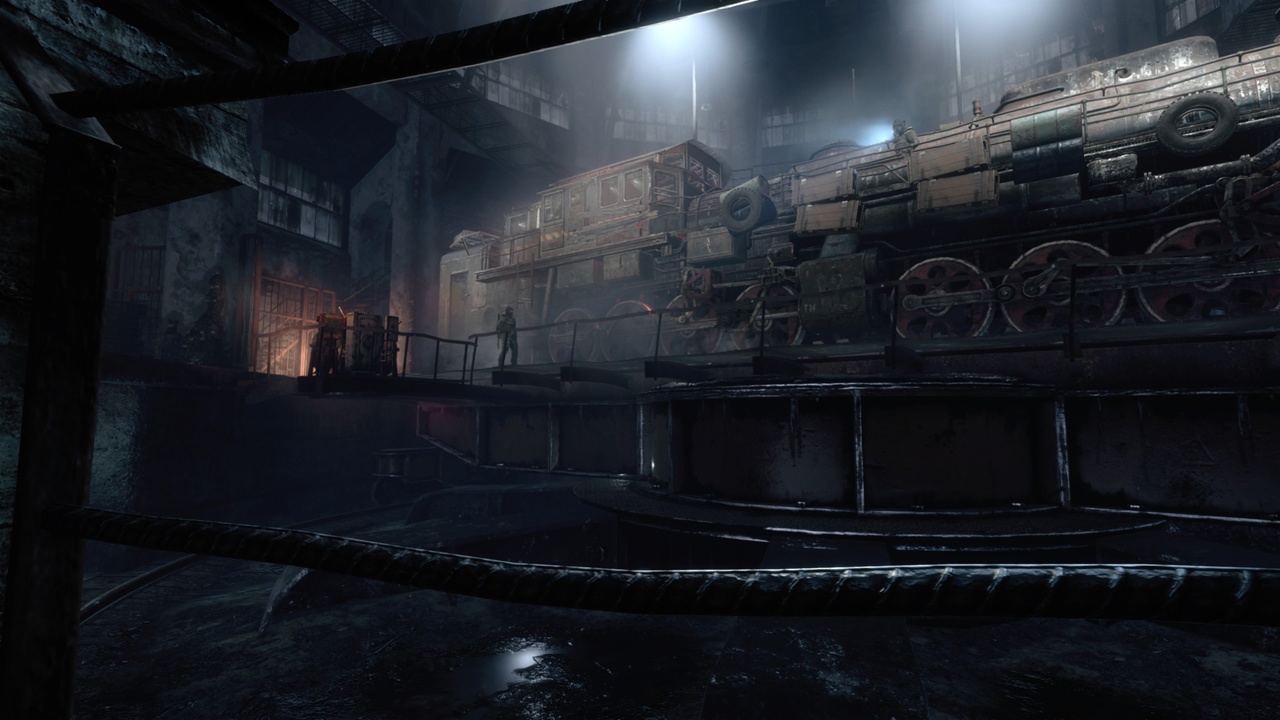
While Metro Exodus does a lot of things to stay true to its predecessors, it brings a lot of changes to the table that completely mix up the Metro formula (and they’re not all for the better). The most notable change (in terms of gameplay) is the shift from the linear and tightly focused tunnels of the Metro, in favour of numerous, semi-open world maps that serve as the backdrops for many of the games’ core missions. The environments themselves are visually stunning and are generally fun to explore, and are showcased perfectly within the 4A Engine, which outputs the game as 4K 30FPS standard on the PS4 Pro and Xbox One. Whilst they are aesthetically pleasing, the large, non-linear maps bring the series’ signature identity crisis to the forefront this time around, bouncing between linear and semi-open sandboxes, never fully committing to either one, which weakens the pacing of the gameplay. The problem with large open levels (in any game) is that they put the player in a state of mind that actively make you want to explore them; in the case of Metro Exodus, the game exemplifies this tenfold, only to suffer with the issue (on numerous occasions) where exploration is halted dead in its tracks due to certain areas being locked behind story missions, whether there’s a ‘point-of-interest’ marker present on the map or not (the Depot section on the Volga River level was a personal annoyance) destroying the urge to explore altogether. Other big issue present are the games’ loading times (which are directly related to the size of some of the levels) which can take well over three minutes at certain points before you’re able to get into the game. Metro Exodus also suffers from graphical issues as well, with significant screen-tearing during cutscenes, frame-rate drops and general texture popping on some of the bigger maps. However, these issues may only be native to the console versions of the game (indicating a shoddy port) as the game has been marvelled on PC for its outstanding performance and visuals.
Negatives aside, there are numerous changes to the gameplay formula that act as solid improvements over Metro Exodus’ predecessors, such as the reworked customisation system and weapon maintenance, which directly feeds into the games’ exploration elements. At any point you can strip a weapon you find in the field of all its attachments and store them for later use. When used in conjunction with the crafting backpack however you are able to change your set-up on the fly, going from a silenced revolver to a sniper rifle/carbine in a matter of seconds, making Artyom more versatile than ever before with the number of scenarios the game throws at you. Keeping weapons clean in Metro Exodus is also another factor that’s important when it comes to their accuracy and performance, something else that is also tied to the game’s exploration. Throughout many of the game’s environments, there are two types of common resources that can be used for both crafting and maintenance: scrap metal and chemicals, both of which are widely found if you explore the game world enough. The game’s gunplay is as strong as it’s always been, offering unique weapons that suit different scenarios. Like in previous titles Shotguns are king when it comes to mutants, when going up against a gang of bandits however, different tactics can be used, with stealth still being the premier method for resource conservation; although nothing is quite as satisfying as finding a vantage point and picking them bandits one-by-one with an
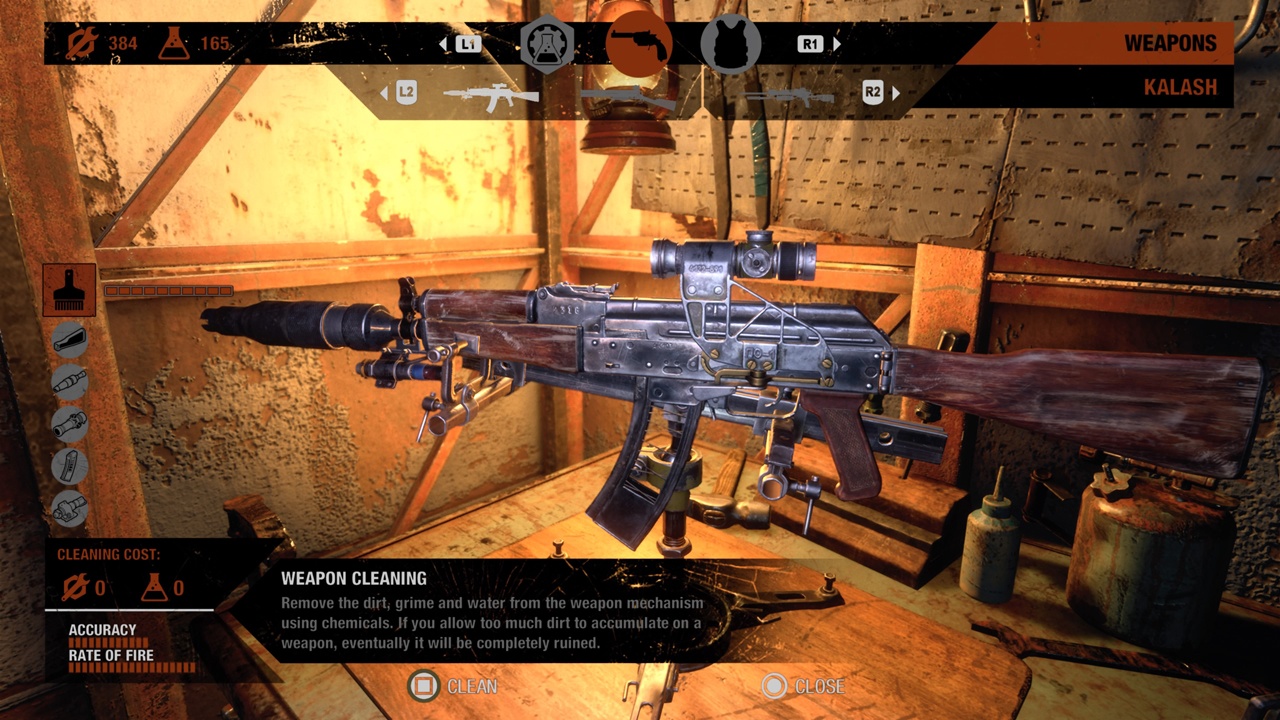
The strength of the Metro series has always been in its writing (based on the best-selling series of novels of the same name by Dmitry Glukhovsky) and Metro Exodus doesn’t disappoint in the narrative department. As aforementioned the game takes place over the course of a year and follows Artyom and Co. as they search for a place free from the politics, mutants and radiation that Moscow had on offer. The game takes you to numerous locations across post-apocalyptic Russia, showcasing numerous pockets of civilization that feel like the perfect homage to post-apocalyptic media of a similar ilk (the ‘Caspian’ was heavily inspired by Mad Max, acting as a personal favourite of mine). By the time the game reaches its conclusion, you’ll have made numerous choices that not only determine the fate of certain characters but will directly determine which ending you achieve (the karma system returns from the first two games, albeit slightly watered down). No matter which ending you achieve however, the events that unfold over the last half hour of Metro Exodus are enough to make the toughest SOB on the planet tear-up like a little girl watching Bambi for the first time, which is a testament to how invested one can get with the extremely well-written characters of Metro Exodus.
Overall I enjoyed the 30-40 hours I spent with Metro Exodus; the game isn’t without its flaws and the new level design leaves a lot to be desired, but the core experience is one of the more unique experiences to grace gaming in recent years, offering an excellently paced, well-written narrative, only let down slightly by gameplay that can’t make its mind up as to what kind of game it wants to be. Definitely one to pick up if you’re a fan of the series, and with post-launch content planned for the months ahead, this isn’t the last we’ve seen of Artyom.
A PlayStation 4 review code was provided by Deep Silver.

